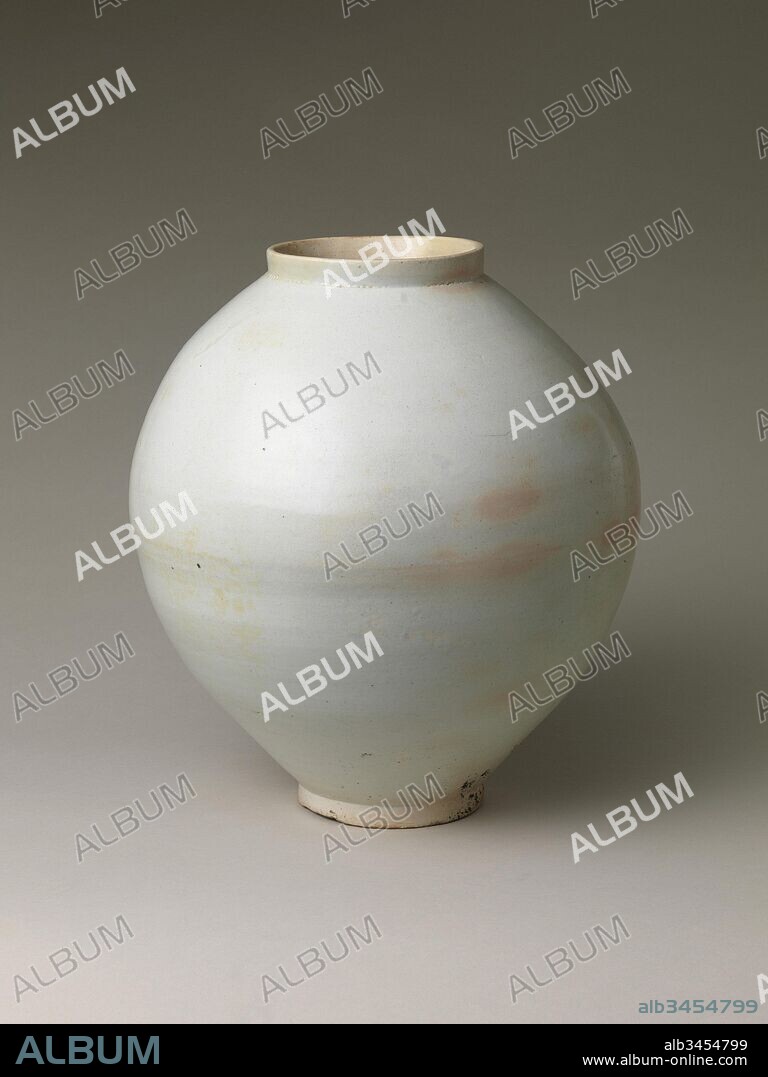alb3454799
?? ???? ??, ??? ??, Moon Jar, Joseon dynasty (1392–1910), second half of the 18th century, Korea, Porcelain, H. 15 1/4 in. (38.7 cm); Diam. 13 in. (33 cm); Diam. of rim 5 1/2 in. (14 cm); Diam. of foot 4 7/8 in. (12.4 cm), Ceramics, A distinctive type of porcelain from the late Joseon period, the moon jar (Korean: dalhangari)—so called because of its evocative form—was usually made by joining two hemispherical halves. The peach hue of the glaze, unintentionally acquired during firing, adds to the charm of this jar.

|
Add to another lightbox |
|
Add to another lightbox |



Caption:
?? ???? ??, ??? ??, Moon Jar, Joseon dynasty (1392–1910), second half of the 18th century, Korea, Porcelain, H. 15 1/4 in. (38.7 cm); Diam. 13 in. (33 cm); Diam. of rim 5 1/2 in. (14 cm); Diam. of foot 4 7/8 in. (12.4 cm), Ceramics, A distinctive type of porcelain from the late Joseon period, the moon jar (Korean: dalhangari)—so called because of its evocative form—was usually made by joining two hemispherical halves. The peach hue of the glaze, unintentionally acquired during firing, adds to the charm of this jar
Credit:
Album / quintlox
Releases:
Model: No - Property: No
Rights questions?
Rights questions?
Image size:
3901 x 5200 px | 58.0 MB
Print size:
33.0 x 44.0 cm | 13.0 x 17.3 in (300 dpi)
Keywords:
12.4 • 13 • 1392–1910 • 14 • 15 1/4 • 18TH CENTURY • 18TH CENTURY, THE • 18TH • 33 • 38.7 CM • ADDS • CERAMICS • CHARM • DALHANGARI • DIAM • DISTINCTIVE • EVOCATIVE FORM— • FIRING • FOOT 4 7/8 • GLAZE • GRACE • GRACEFULNESS • H • H. • HALVES • HEMISPHERICAL • JAR • JOINING TWO • JOSEON DYNASTY • KOREA • KOREAN • LATE JOSEON • MOON JAR • PEACH HUE • PERIOD • PORCELAIN • RIM 5 1/2 • SECOND HALF • THIRTEEN • TYPE • UNINTENTIONALLY ACQUIRED • USUALLY • XVIII CENTURY • —
 Pinterest
Pinterest Twitter
Twitter Facebook
Facebook Copy link
Copy link Email
Email

